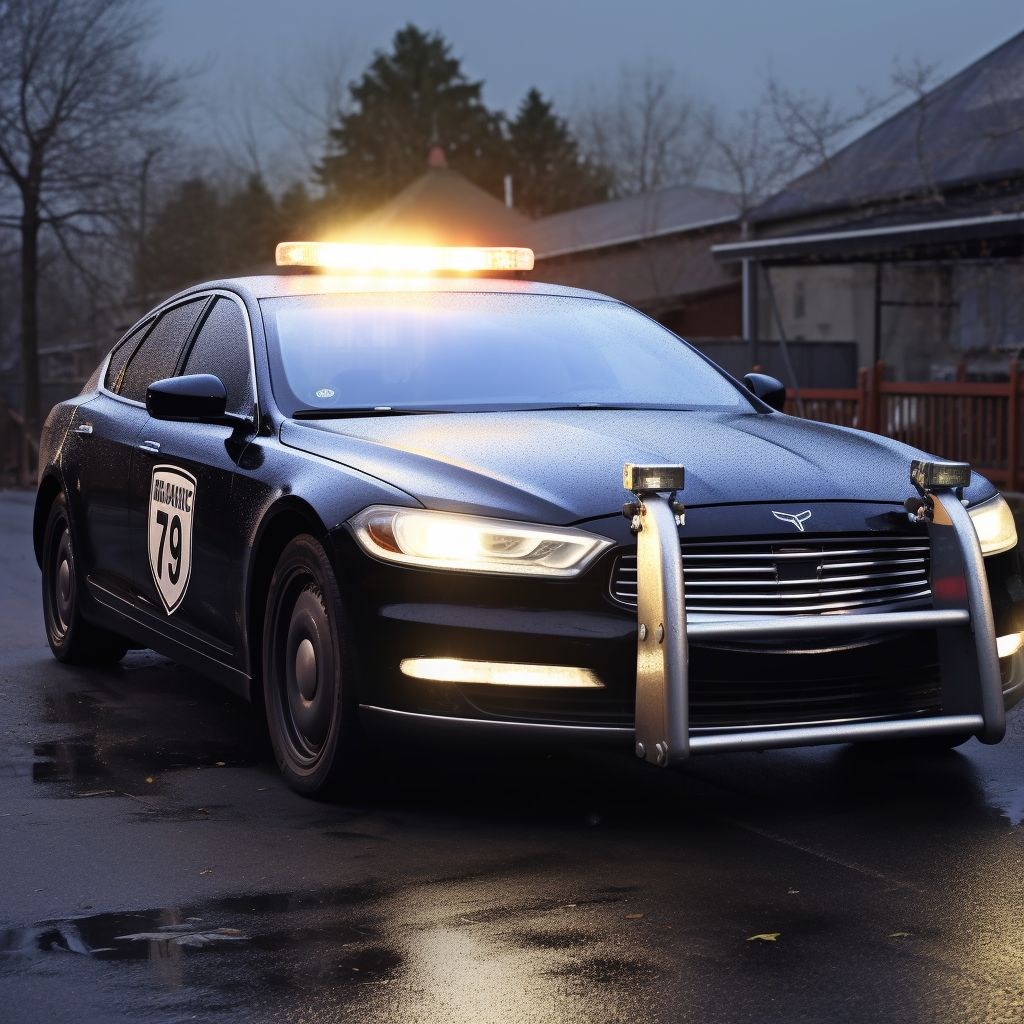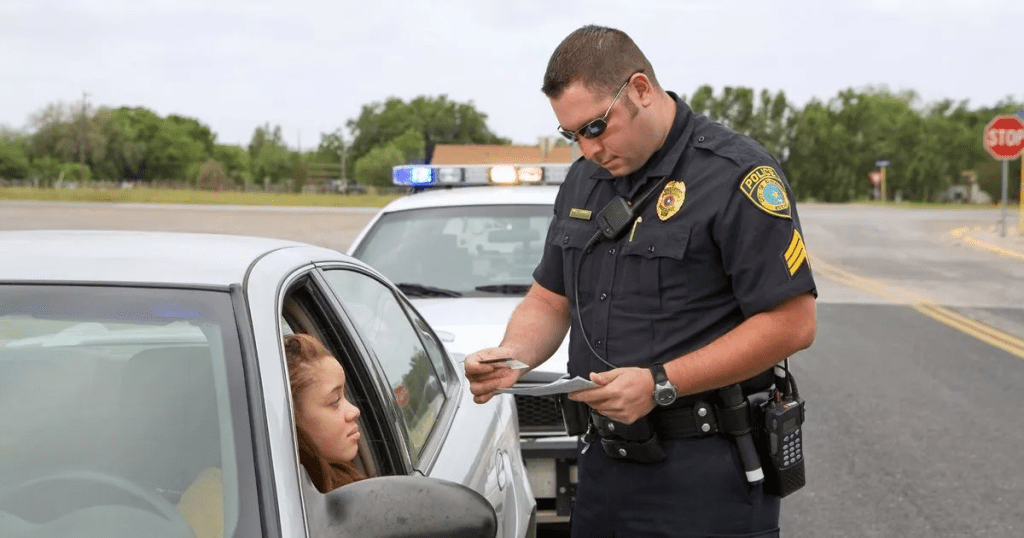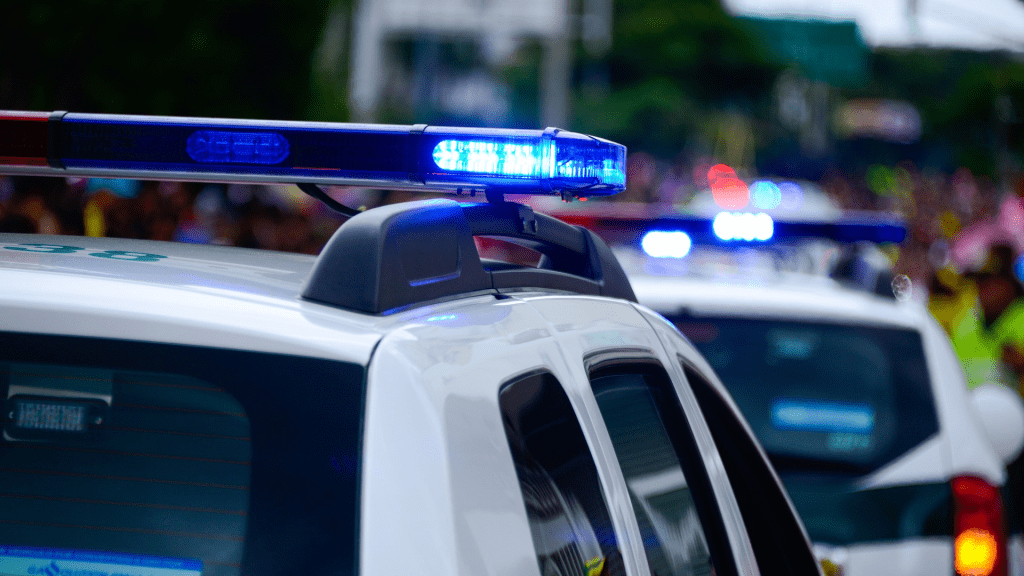The flashing red and blue lights in your rearview mirror can trigger a rush of anxiety. As you pull over, your mind fills with questions: “What did I do wrong? Is my paperwork in order?” But then, something curious happens – the police officer touches the tail light of your car. Have you ever wondered why?

This seemingly small act has piqued the curiosity of many drivers. It’s not a random habit; in fact, it serves multiple crucial purposes. In this article, we’ll uncover the practical and symbolic reasons why police officers often touch the car’s tail lights during a traffic stop, revealing a practice rooted in safety, documentation, and tradition.
Documenting the Traffic Stop
One of the most significant reasons police officers touch the car’s tail lights is to document the interaction. By leaving their fingerprints on the vehicle, officers create a small piece of physical evidence. If there’s ever a question about the officer’s presence or actions at the scene, those fingerprints serve as proof. This evidence can become particularly useful in situations where the traffic stop’s details are later disputed.
The fingerprint on the tail light acts as a timestamp, verifying the exact moment the officer approached the vehicle. This small but meaningful gesture can play a crucial role in piecing together the events that unfolded during the stop, especially if there’s any dispute over the interaction or behavior of those involved.
Enhancing Officer Safety
Police work is often unpredictable, and traffic stops are no exception. Officers never fully know what to expect when they approach a vehicle. Touching the car’s tail lights is a subtle yet important safety precaution.
In the event that the stop escalates into a dangerous situation, such as a confrontation or an attempt to flee, the officer’s fingerprints left on the tail lights serve as evidence that they were at the scene. This evidence helps investigators establish a timeline, and if the worst happens, it can aid in identifying the vehicle and understanding the sequence of events that transpired.
By placing their hand on the tail lights, officers also create an opportunity to quickly assess the condition of the vehicle and the behavior of the occupants as they approach, giving them a brief moment to gauge any potential risks.
Deterring Illegal Activity
The moment an officer touches your car’s tail lights, it sends a strong message: you’re being closely observed. This simple gesture can act as a deterrent to illegal activity.
If a driver or passenger has something to hide, seeing the officer’s deliberate action may make them think twice about trying to dispose of contraband or engage in any other form of suspicious behavior. It’s a subtle reminder that the officer is in control of the situation and is aware of their surroundings.
The touch of the tail light is, in a way, the officer’s silent signal that they’re paying attention, making it harder for anyone to attempt to deceive or act unlawfully.
Establishing a Routine for Consistency
Law enforcement officers often rely on routines to ensure consistency and safety in their daily duties. Touching the tail lights is part of this established routine during traffic stops.

By following a consistent set of actions, officers minimize the risk of making mistakes. Each step in their process, including the seemingly small act of touching the car’s tail lights, keeps them focused and vigilant. Routines like this help officers maintain their sharpness, ensuring they don’t overlook critical details that could affect their safety or the success of the stop.
Additionally, routines provide a sense of structure and predictability for officers in a job where unpredictability is the norm. This simple gesture can be a grounding action, helping the officer stay mentally prepared for the interaction ahead.
Displaying Authority
Touching the car’s tail lights can also serve as a symbolic display of authority. It reminds the driver that they’re in an interaction with law enforcement, and it’s a signal of the officer’s control over the situation.
By establishing physical contact with the vehicle, the officer subtly demonstrates their presence and authority, reinforcing the importance of cooperation and compliance. This small gesture is an unspoken cue that the driver should take the stop seriously and follow the officer’s instructions carefully.
In situations where tensions might run high, such a display of authority can help maintain order and ensure that the interaction proceeds smoothly.
Cultural and Regional Traditions

In some police departments, touching the tail lights has evolved into a tradition. While not every officer may follow this practice, in certain regions or departments, it’s seen as a sign of respect and professionalism.
In these cases, the action isn’t just about documentation or safety; it’s also a part of the culture of the department, passed down from officer to officer. Some may view it as a way of marking the beginning of the interaction, setting the tone for the exchange between the officer and the driver.
While this tradition isn’t universal, it does underscore the fact that many law enforcement practices are deeply rooted in both practical and symbolic significance.
Conclusion
While touching the tail lights of a car during a traffic stop may seem like a small, random act, it carries significant meaning. This simple gesture helps document the stop, enhance officer safety, deter illegal behavior, maintain consistency through routines, and display authority. In some cases, it’s even a part of cultural traditions within certain police departments.
The next time you see an officer touch your car’s tail lights, you’ll know it’s not just a habit—it’s a purposeful act that serves multiple functions in ensuring both the officer’s and the public’s safety. Understanding these practices can foster better communication and respect during interactions with law enforcement, ultimately making traffic stops smoother for everyone involved.


